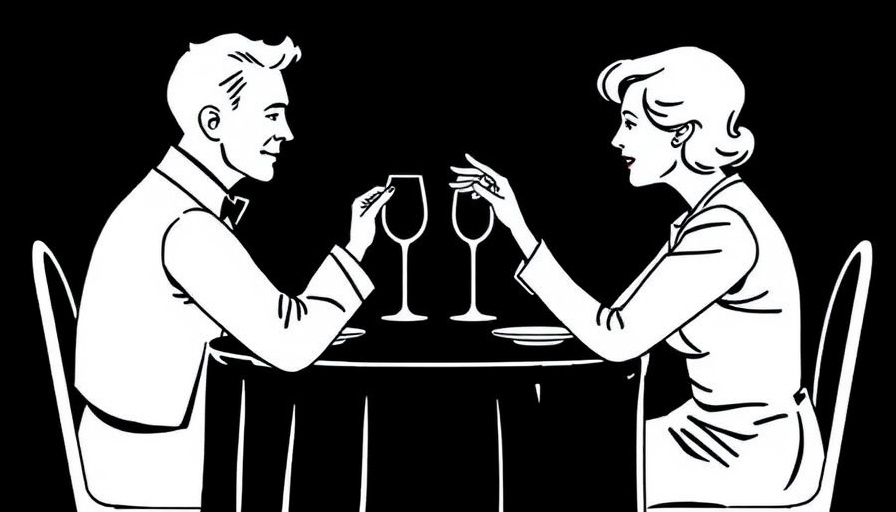
Manners Matter: The Importance of Table Etiquette
In a world where communication can be quick and transient, the significance of good manners and table etiquette might seem outdated. However, as Carol Rey, founder of the Elite School of Etiquette, depicts, mastering these skills is essential for social and professional success. She notes that the dining table often serves as a critical proving ground for individuals looking to advance in their careers or social standings.
Rey’s Steps to Polished Dining
Rey teaches her students that adhering to proper dining etiquette can sometimes make the difference between opportunity and rejection. For aspiring professionals, dining settings are often where potential employers or network connections are observed. Poor table manners can lead to missed chances, as illustrated by Rey’s experiences with her clients—one who faced exclusion at a country club and another who lost a shot at a prestigious private school.
Five Essential Table Etiquette Tips
Here are some of the key points highlighted by Rey:
- No Elbows on the Table: While it may sound archaic, keeping elbows off the table is still a fundamental rule in dining etiquette. But Rey adds a modern twist: if there’s no food present, elbows can be placed on the table, though they must lift as soon as the meal is served.
- Engaging Without Electronics: Engage children with conversation or games instead of devices at the table. Rey suggests preparing fun questions or playing tic-tac-toe for a more interactive experience.
- Handling Rudeness: If someone in your party misbehaves towards the staff, Rey advises addressing the behavior politely to encourage positive interactions that enhance the dining experience.
- Napkin Protocol: If you must step away during a meal, place your napkin on your chair and arrange your utensils on the plate to signal to the server that you’ll return shortly.
- Tipping Dynamics: If you suspect that someone in your party has left an inadequate tip, Rey suggests politely offering to contribute to a more appropriate amount if the other person has left.
Understanding the Social Dynamics
In the realm of dining etiquette, understanding the social nuances at the table goes beyond mere rules; it’s about respect and communication. Rey’s experience stresses that good manners can pave the way to opportunities that far exceed the transactional, providing warmth and connection. In both professional settings and casual outings, demonstrating knowledge of etiquette not only reflects well on oneself but also fosters goodwill among peers and strangers alike.
Why Etiquette Education Matters
As social media and digital communications take precedence in today’s world, the art of face-to-face interaction is risked to be lost. Rey’s work is crucial in preserving this tradition, teaching individuals how to navigate complex social interactions with grace. For many, these dining experiences can be daunting; however, with the right skills, they can transform into opportunities for growth.
Conclusion: The Lasting Impact of Dining Skills
In today’s fast-paced environment, the value of good etiquette cannot be overstated. As Carol Rey aptly puts it, great manners and dining skills “can take you places” where your existing conditions might not. Whether navigating a business lunch or simply enjoying a meal with loved ones, embracing proper etiquette enhances not only social interactions but also internal self-confidence. So, as you prepare for your next dining experience, remember these practical tips and let your manners shine.
 Add Row
Add Row  Add
Add 




 Add Row
Add Row  Add
Add 

Write A Comment